Intelligence for safe deployment selection of tactics
Our primary method of deciding tactics will be built around a DRA. A high quality, well informed DRA, is key to ensuring a safe, suitable methods of working are implemented

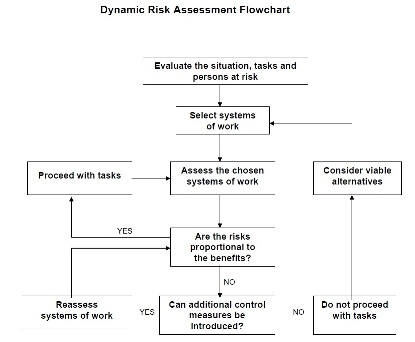
“The elements of a DRA should include:
- The assessment of risk in dynamic situations is undertaken prior, during and after the execution of an operation
- The benefits of proceeding with a task must be weighed carefully against the risk
- Think before you act rather than act before you think
- What sets DRA apart from systematic risk assessment is that it is applied in situations that are:
- unpredictable/unforeseen risks
- the risk environment rapidly changes
- allows individual to make a risk judgement
- provides personnel with a consistent approach to assessing risk”
But DRA has some known, researched, shortcomings and indeed recent articles in the ‘Fire magazine’ are offering alternative “Operational Risk Strategies”. It is fair to say that although DRA has served the fire service well some criticism may be made in that:
“ (sic) DRA as a risk management strategy...
- It is unclear as to its origination or on what basis it was drawn up
- No one has tested the various elements experimentally
- DRA (key to decision making) suggests that generally decisions do not follow in a neat sequential procedure, instead characterised by apparently instinctive experience driven responses to the situation as it unfolds
- Decision making research found that fire-fighters would be unlikely to comply with a deliberate process of risk assessment were it to be imposed “(2)
So what information may the first attending IC use to form their DRA and how useful/valid is it?
What follows is an outline of some of the key Informers that will be used to build an overall, and subsequent Dynamic risk assessment of an incident in a HR building. It is trailed by some pros and cons of each informer. The list and its pros and cons is not exhaustive......
Pre-Planning
An important element in successful, safe HR operations is knowing and understanding the risk. Intelligence, such as water supplies, fixed installations, lifts, stairwells, ventilation systems, compartmentation, housekeeping and occupancy will be major elements in forming a suitable tactical response. These pre-planned intelligence reports go to form 'site specific risk info/premise risk management' (SSRI/PRM) documents that should be available for first attending crews.
Pros:
- It is pre-planned
- Crews trained and exercised in pre-agreed tactical approaches.
- SSRI/PRM contains building plans, layout and water supply information.
- Main hazards highlighted.
Cons:
- Who risk assessed and developed the local tactical approach? Are the risk assessors trained? Are any tactics correctly engineered? Are local staff skilled enough to be able to identify salient risks? Have technical fire safety staff (fire engineers) been involved? In most cases, unfortunately, the answers to these questions may cast some doubt over the validity of some pre-planning.
Caller information
Caller Information will help in situations when the caller is directly involved in the fire or has additional information that can confirm occupancy of any compartment. The caller themselves may well be a persons reported / trapped or be in a situation where they can observe others trapped. For this information to be useful It is important that Control Room staff pass it to attending crews live and in real time. Information as to smoke logging that may be affecting means of egress or stairwells will be important.
Pros:
- Caller information is first hand and directly witnessed. It is current.
- They may be interrogated to obtain more thorough information.
Cons:
- Caller information has also caused serious problems at HR incidents where incorrect or inaccurate information (usually caused by panic) has lead incident commanders to make what were subsequently dangerous tactical decisions resulting in firefighter injury (9).
- Many HR fire calls are initiated by Auto-dialer / CAS and pass no incident specific information.
Observation on attendance
An important external observation that needs to be made by crews either attending or on route to the incident is the state of ventilation and fire spread. Failed windows or balcony doors can pre- warn of an extensive high energy / long burning fire and possible vertical fire spread.
This observation, ideally, needs to be made by the initial attending IC. He/she is perhaps best qualified to absorb and understand what he/she sees and incorporate this into his/her tactical decision making. It is important that a ‘whole view’ of the incident is obtained. This should involve walking around all sides of the building but failing this observation from each accessible corner will assist.
Pros:
- First hand observation.
- Dynamic and current.
Cons:
- Observer needs to understand what is observed and its implications.
- Time consuming.
Read more HERE about First Attending IC Observation and reading an incident
Occupancy (evacuees)
Occupants evacuating from the building can give further information on involvement and smoke spread. They may also be able to confirm occupancy of affected areas (and potentially persons trapped)
Pros:
- Occupants may include security guards, porters, cleaners and caretakers. These are an invaluable source of information, usually knowing the building intimately.
- Witnessed first-hand.
Cons:
- Panic may cause occupants to give confused or inaccurate information.
- Where many occupants are evacuating, the IC has to be selective about the information they are obtaining (information overload)
- Peer pressure from occupants can affect decision making
Automatic Fire Detection (AFD)
Many HR buildings in have some form of Automatic Fire notification systems. These range from simple Pt6 single point 'domestic detector' up to fully addressable L1 type systems with Auto dial/ Central Alarm monitoring.
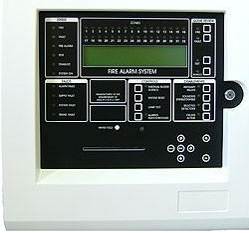
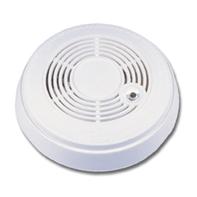
Pro:
- Correctly used modern addressable AFD systems can be a useful source of information, potentially displaying initial detection times, development rate and areas affected
- Pt 6 systems should enable the occupants of individual flats to safely evacuate and reduce the ‘saveable life’ element in and FRS dynamic risk assessment.
Cons:
- Many firefighters and Junior officers do not know how to correctly and safely read and interpret the information given, often confusing the ‘initial trigger event’ and the ‘most recent event’ in the log.
- Pt. 6 systems do not warn other occupants of a developing fire in the building
- Pt 6 systems do not provide warning should any communal area be involved in fire.
Evacuation Policy
There are basically 3 pre-planned evacuation policies that are likely to be encountered. They are simplistically explained as:
Defend in place (stay put): Used to minimise the number of people evacuating. Those that deem themselves not at direct risk from the Fire or smoke will stay in their compartment and use the compartmental passive fire protection of the building keep them, safe until the FRS extinguish the fire. Those that deem they are in a risk area should evacuate.
Pro:
- Lightens the evacuation load on stairwells
- Less ambient occupants are not put at physical risk during evacuation
Cons:
- Occupants are not normally trained or qualified to make their own evacuation risk assessments.
- If an incident escalates, residents that have initially ‘stayed put’ may need to be evacuated because of smoke/fire spread. This places a considerable resource/time requirement on attending crews.
- Stay put relies fully on a high, well maintained level of fire precautions and compartmentation. Unfortunately for some high rise housing stock, this is not necessarily the case. Vertical fire spread is becoming a serious issue and fires are spreading between floors much faster than previously anticipated due to poor fire safety standards and early window failure (15) (16).
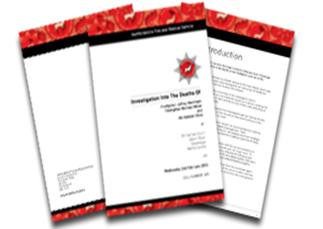

Partial (Zoned) evacuation : Used where an intelligent, pre- programmed alarm system is able to notify those at risk within certain areas of the building, to evacuate (possible to a place of initial safety), but the alarm does not order evacuation of those deemed as currently ‘not at risk’ but sounds a “stand-by” or pre-warning alarm. Should the incident spread the alarm status will change dynamically in those areas becoming affected.
Pro:
- Will minimise the evacuation to those in, or around, areas of direct risk.
Cons:
- Requires an expensive ‘intelligent’ addressable alarm system.
- Occupants need to be trained to interpret what the Fire alarm system is telling them and there actions.
Full Evacuation: Is where any activation causes the alarm to sound through out the building and this in turn should prompt all occupants to evacuate.
Pros:
- Maximises the evacuation and should theoretically lead to an empty building with little or no life risk.
Cons:
- Stairwell loadings may be high and hinder FRS access.
- Unfortunately, even if there is early automatic detection and a full evacuation policy, experience shows that the occupancy are slow to responded. 8-15 minute occupant response times and noncompliance (failure to evacuate) is common, especially in Buildings with lower socioeconomic occupancy make up. (3,4). A few days following the fire at Lakanal House, London ( 3rd July 2009) crews at Margate leaflet dropped all residents in HR buildings on its fire ground. This included the National Guidance leaflet and a personal letter detailing the procedure to be adopted in their buildings. This procedure was that upon hearing the fire alarm sounding that all occupants must evacuate. Prior to this these same HR buildings had had frequent visits from local crews and Fire Safety officers reinforcing the “evacuation message” On 2nd August 2009, less than a month after the Lakanal House fire and the extensive media cover it generated, Margate attended an AFA sounding at a local HR (10). Although the alarm was sounding throughout the building, not a single occupant evacuated.
Incident location
The height of the incident floor(s) will have a profound effect of the tactics used.
Below 3rd floor: may be approached in a similar way to other domestic compartment fires. These lower levels may facilitate use of external ladders, involve lower levels of physical work in deploying personnel/equipment and external ventilation (wind effect) will not be so influential and flow rate will not be impacted. But it must be remembered that the incident is still in a HR building and Fire-fighting operations can affect the remainder of the building.
Up to 14th floor. The physiological effect of deploying crews above the 3rd floor will start impacting upon the speed of deployment and effectiveness of crews (6) Flow rates will be reduced and may effect branch performance (11,12).
14th to 20th floor. There will be a profound physiological effect of deploying crews at these levels impacting upon the speed of deployment and effectiveness of crews (6) Flow rates will be seriously reduced to the extent that branch performance may be ineffective (7,12).
Above 20th floor. Buildings of this height, notionally, have specific design criteria to support Fire Service operation. Primarily these should include dedicated fire fighting lifts, ventilation systems and wet risers. It is understood that thse buildings would ordinarily attract specific firefighting and firesafety measures, so this discussion is restricted to buildings up to, and including twenty stories.
Building design and Fire Safety
HR buildings in UK are built to be compliant with Regulations , Codes of Practise , British (EN) standards, Approval Documents, H&S requirements and Engineered solutions. They are primarily designed for the suitability and safety of the occupants, but some of the design requirements enforce measures designed specifically for firefighter use.
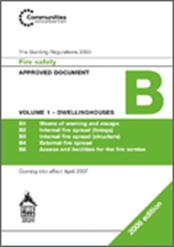
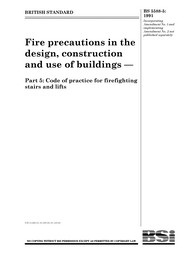

Pros:
- Many of the design elements will GREATLY assist occupants and firefighters.
- Most are proven and well researched.
Cons:
- Much HR building stock dates back to late 1950’s early 1960’s. Design criteria, standards and legislative enforcement was different.
- Passive fire precautions in these buildings are now getting very old and may have deteriorated.
- Recent large scale refurbishments of these buildings do not guarantee improved fire safety (16). Various HR buildings have recently featured in a BBC investigation into ‘Fire safety in Tower blocks’ and standards there were called into question (17)
Oncoming and additional attendance:
Any offensive strategy in a confirmed fire in a HR will ALWAYS be resource hungry.
The predetermined initial attendance (PDA) , by its very nature should provide enough resources to implement an initial safe offensive attack on the incident. Normal practice across UK FRS would consider offensive internal attack on a fire to require a minimum of 2 appliances (equating to a min of 8 personnel in most UK FRS). In HR scenarios and using the Task Analysis model developed for South East Regional SOP’s, 4 Pump minimum (16 personnel) would be the expected PDA.
Early attendance of height vehicles (HV), for incidents within reach may also affect the tactical decision making. (rescues, external attack etc..)
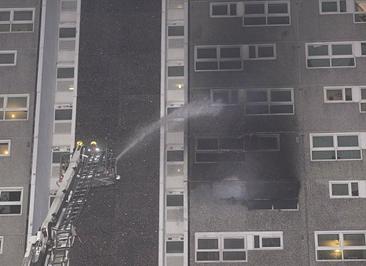
Shirley Towers (2010)
When developing the RA for initial deployment it is important that the IC knows what resources are going to attend and the time scales.
Pros:
- The controlling factor in HR fire fighting is a prompt and effective application of manpower. Strong well resourced PDAs support this.
Cons:
- PDA’s are developed locally following a pre-incident risk assessment and the envisaged use of building specific tactics. PDA should take into account the use of ‘fall-back’ generic tactics or situations where non-local crews will form the initial PDA.
- National guidance is pressuring FRS to reduce/remove HV on PDA’s. Statistics to support this decision seem to be based on ‘rescue/intervention only’ data. There are evolving tactics for HR fire fighting including the use of HV’s for external spray protection to limit vertical fire spread. This would require very early (PDA) deployment of the HV.
Reconnaissance
Once the decision is made to deploy crews to the incident area, on-going risk assessment and observations must be made. Key observations such as changes in smoke dispersal, ventilation/fire in the access route and proposed deployment areas will affect the choice of tactics. External (radio) information from on-coming appliances should be included. If lifts are used then crews must alight well below any floor believed to be involved (3 floors or more) They should continue their accent up the buildings protected stairwells making keen observation through any vision panels they encounter. As they approach the incident floor the IC (who may now be referred to as the Bridgehead Commander - BC) will start to glean information about smoke and fire spread. If smoke is affecting the protected stairwell then a serious tactical overhaul needs to be made as these stairwells act as FRS means of egress and compromising these is not an option. If smoke is effecting protected lobby’s or corridors this informs the BC that the fire is located in these communal areas or (more likely) that the compartmentation has been breached or compromised.
Pros:
- IC/BC is obtaining up to minute information within building
- Radio communications from oncoming/ external crews will should pass on-going intelligence from outside building.
Cons:
- IC/BC understands the implications and dynamics of what is being observed.
- Potential for information overload.
- The best reconnaissance will involve observations into the fire compartment and this in itself is fraught with danger.
 This link will take you away from www.highrisefire.co.uk Please be aware that we do not necessarily endorse or support the views, opinions and expressions of this site !
This link will take you away from www.highrisefire.co.uk Please be aware that we do not necessarily endorse or support the views, opinions and expressions of this site !
